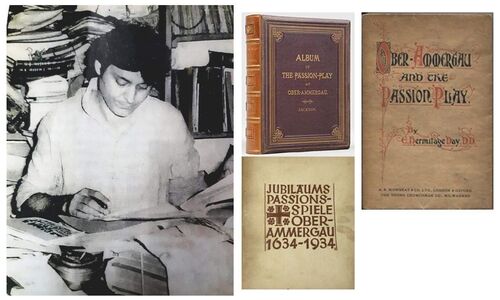
Soumitra Chatterjee rarely visited my father’s library. It was not necessary. He was not a collector of rare books .
Moreover, as a co-founder and one time editor of the literary little magazine, Ekkhon, having their office at the floor of the bookshop, Subarnarekha, housed in College Street, there was no need. He had all the books he wanted in his beck and call
He was introduced to my father by Satyajit Ray when he was hunting for some rare books on theatre and Ray mentioned that he could get in touch with the antiquarian he was close to : Nirmal Chandra Kumar.
Thus he landed at our home but was very disappointed not finding any books on theatre. My father told him that if he did get a rare tome on the subject it was eagerly grabbed by Vasanth Chowdhury who visited my father every other day on his way to Clem Brown Hall in Sealdah where he acted on stage.
However, he sat to talk to my father and he introduced him to Passion Play. Hearing the word ‘play’ his ears popped up but on my father explaining that the development of the Passion Play was about the same as that of the Easter Drama and that it originated in the ritual of the Church, he lost interest. Being a Marxist he kept far from any religious rituals and any connection the Church Litany which was not of much interest to him.
My father went on to explain that this is the earliest form of native theatre. The oldest of the Passion Plays broke away from the ritual and to adopt a more dramatic form. This evolution is shown by the interpolation of free translations of church hymns and of German verses not pertaining to such hymns, as well as by the appearance of Mary and Mary Magdalene in the action. From these humble beginnings, the Passion Play developed very rapidly, since in the fourteenth century it was at a stage of development that could not have been reached except by repeated practice.
The magnificent productions of the Passion Plays during the fifteenth century are closely connected with the growth and increasing self-confidence of the cities, which found its expression in noble buildings, ecclesiastical and municipal, and in gorgeous public festivals. The artistic sense and the love of art of the citizens had, in co-operation with the clergy, called these plays into being, and the wealth of the citizens provided for magnificent productions of them on the public squares, whither they migrated after expulsion from the churches. The citizens and civil authorities considered it a point of honour to render the production as rich and diversified as possible. Ordinarily, the preparations for the play were in the hands of a spiritual brotherhood, the play itself being considered a form of worship. People of the most varied classes took part in the production, and frequently the number of actors was as high as two hundred and even greater. If was undoubtedly no small task to drill the performers, particularly since the stage arrangements were still very primitive.
The stage was a wooden structure, almost as broad as it was long, elevated but slightly above the ground and open on all sides. A house formed the background; a balcony attached to the house represented Heaven. Under the balcony three crosses were erected. Sometimes the stage was divided into three sections by doors. Along the sides of the stage, taken lengthwise, stood the houses required for the production; they were indicated by fenced-in spaces, or by four posts upon which a roof rested. The entrance into Hell was pictured by the mouth of a monster, through which the Devil and the souls captured or released during the plays passed back and forth. The actors entered in solemn procession, led by musicians or by a præcursor ,herald, and took their stand at the places appointed them. They remained on the stage all through the performance; they sat on the barriers of their respective divisions, and were permitted to leave their places only to recite their lines. As each actor finished speaking, he returned to his place. The audience stood around the stage or looked on from the windows of neighbouring houses. Occasionally platforms, called "bridges", were erected around the stage in the form of an amphitheatre.
It is interesting to note that Soumitra Chatterjee never borrowed a book from my father’s library. If he needed to refer to some book he would come home, go through the book and take copious notes.
I would like to mention here that many of the techniques of Passion Play was adapted in the play Raja Lear, where Chatterjee acted as King Lear.
